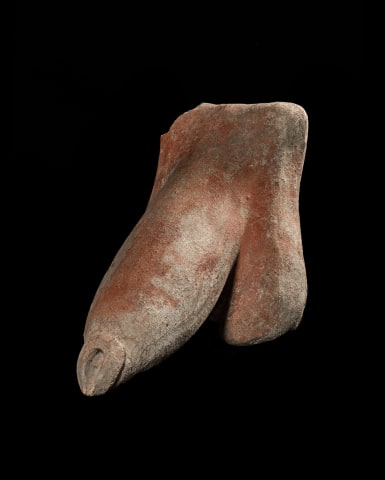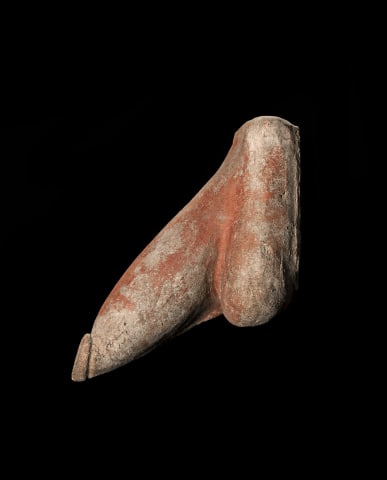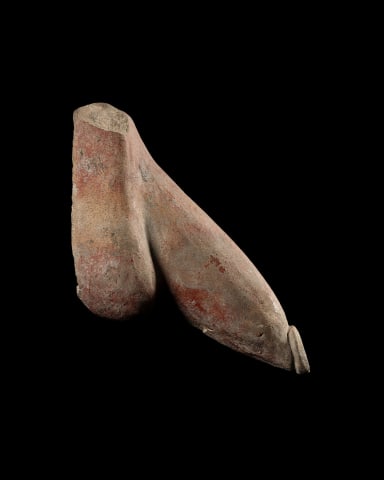Further images
Whilst anatomical votive offerings, including genitalia, were common in Etruscan culture, the monumental scale of the present example is extremely rare not only that, to retain so much of the original red polychromy is also uncommon.
This votive terracotta representation of male genitalia, made from brownish, porous clay with gritty black impurities, likely originates from a sanctuary votive deposit in Etruria (central Italy). Such offerings were commonly dedicated in hopes of healing conditions like phimosis or marking significant life stages such as puberty. In Roman culture, depictions of the phallus also symbolised fertility, luck, and protection.
The tradition of crafting and dedicating anatomical votives was widespread in ancient Etruria and Latium, beginning in the seventh century BCE and reaching peak popularity during the Hellenistic period (3rd–1st century BC). These offerings included a diverse array of body parts, such as heads, limbs, fingers, toes, eyes, ears, genitalia, and even internal organs like the uterus, heart, and bladder. More than 300 sites in the Etrusco-Italic region have yielded such artefacts, suggesting their deep-rooted significance in religious practices. While Greek sanctuaries also featured anatomical votives, they were generally limited to shrines of specific gods, such as Asklepios, whereas in Etruria and Latium, a broader range of deities received them.
Provenance
Roger Peyrefitte (1907-2000), Paris, FranceS. Nazariett, Switzerland; acquired from the above, 3rd March 1976
Art market, Switzerland
Private collection, Switzerland; acquired from the above, 1983





